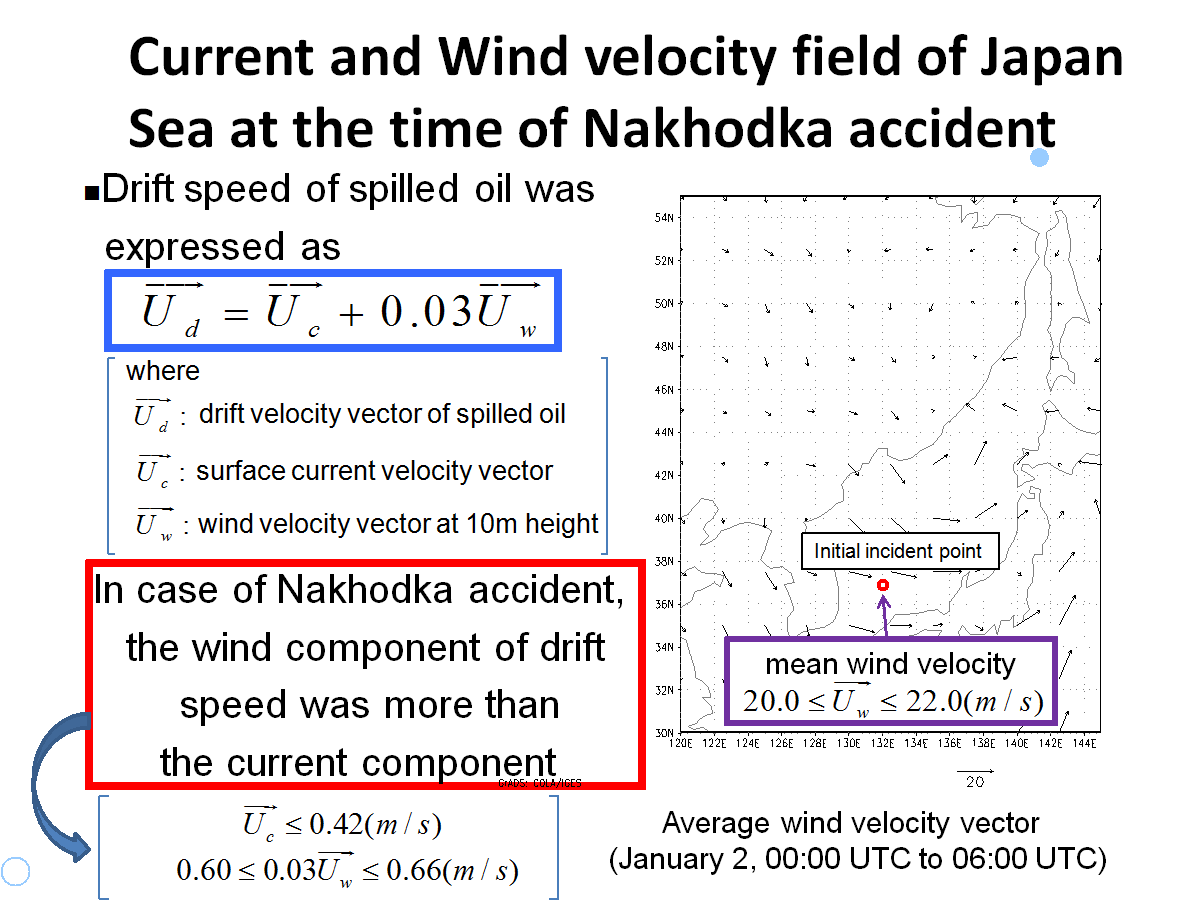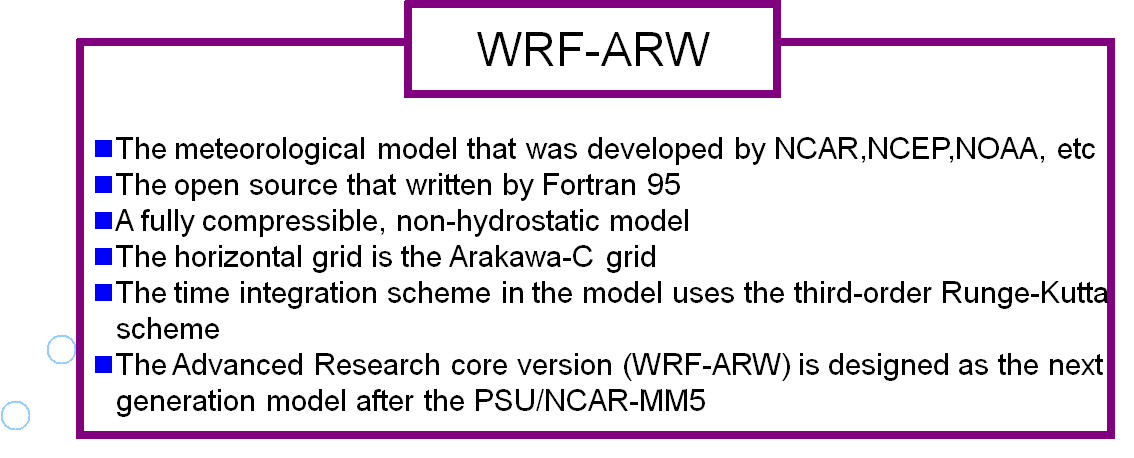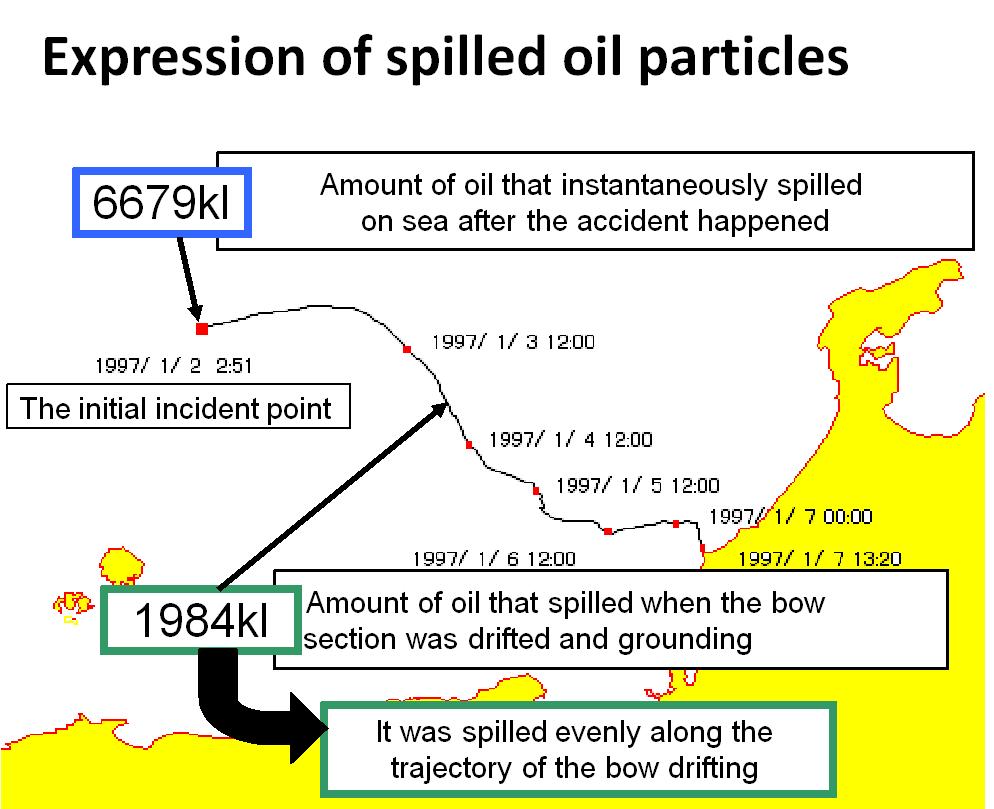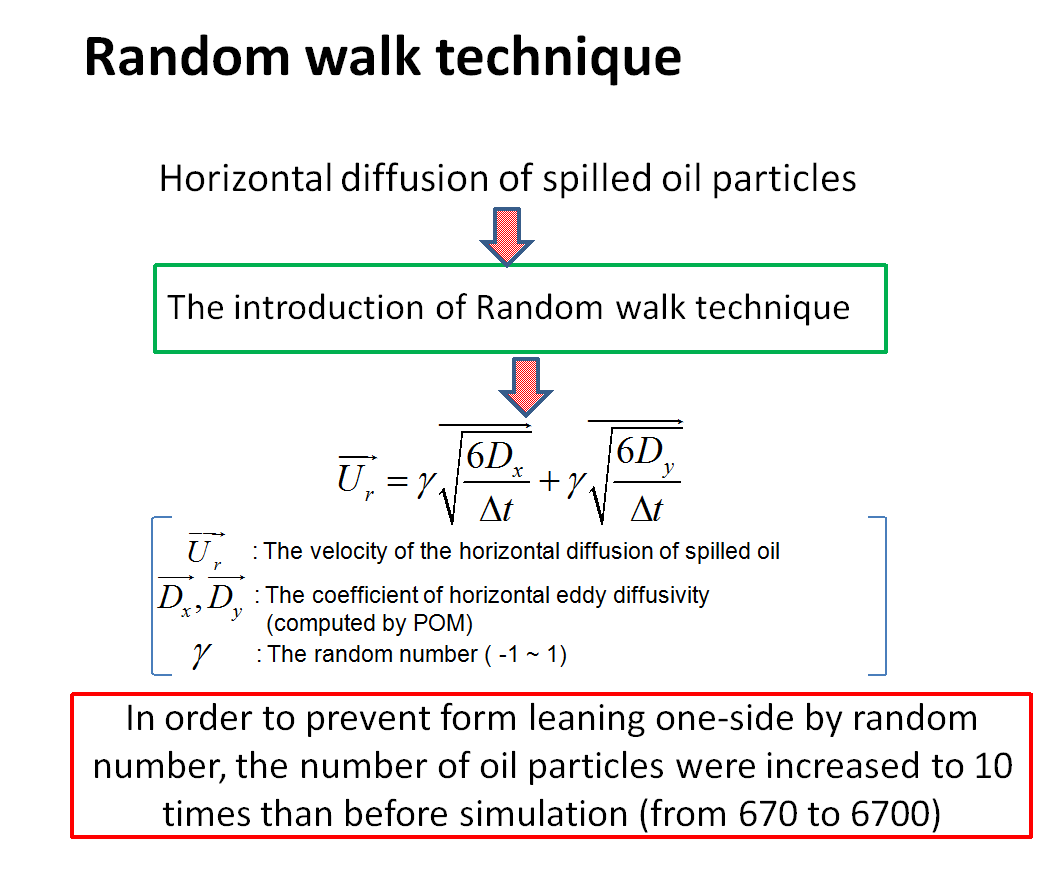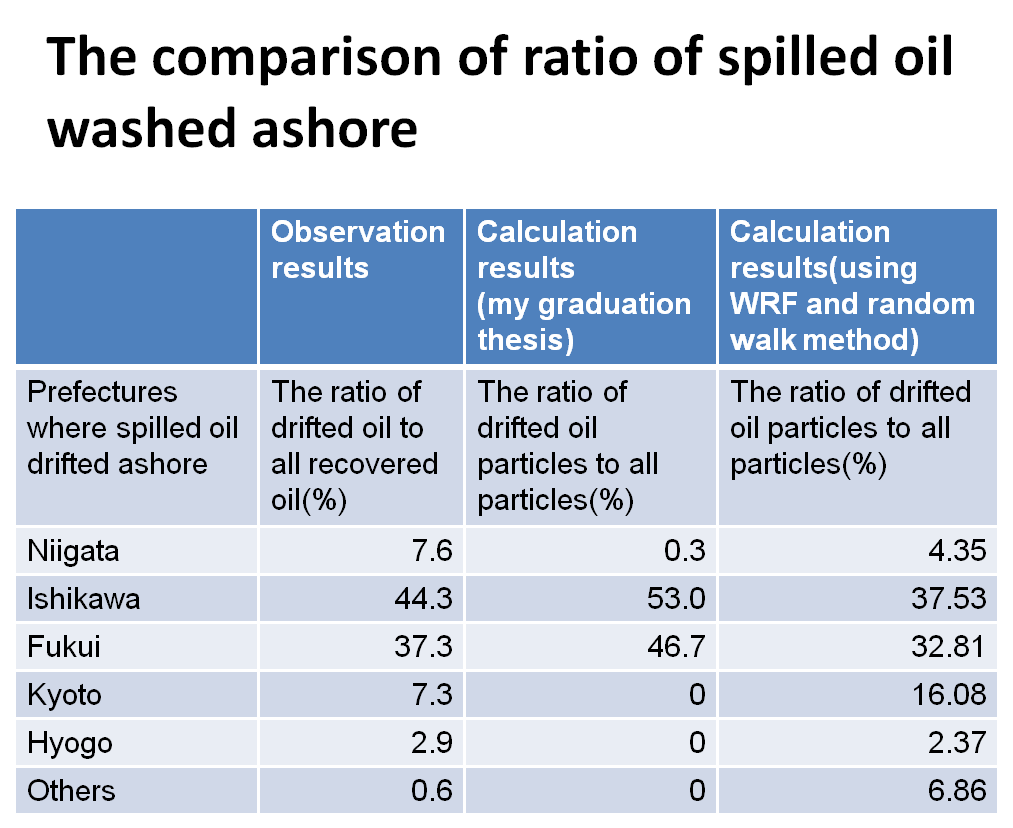Objective
Abstract
Firstly, In order to evaluate the accuracy of WRF model, the ocean wind of Japan Sea was simulated using WRF. The simulated results of the wind velocity and the wind angle at 10m height were compared with the observed ones on the same longitude, the same latitude, and the point of the same longitude and latitude. The simulated results described the wind field of the Japan Sea well.
Next, In order to investigate the effect of resolution of wind data to spilled oil drifting, two types of simulation were carried out. One was the simulation of spilled oil drifting using calculated wind velocity of Japan Sea by WRF. The other was the simulation of spilled oil drifting using interpolated wind data of ECMWF. Comparisons were made between the results of two types. Additionally, to represent horizontal diffusion, a random walk technique was introduced. The simulated results on the location and the amount of spilled oil drifted on the beach showed good agreement with observed ones. In order to estimate the damage by spilled oil washed ashore at each region, the amount of spilled oil washed ashore was calculated and visualized.
